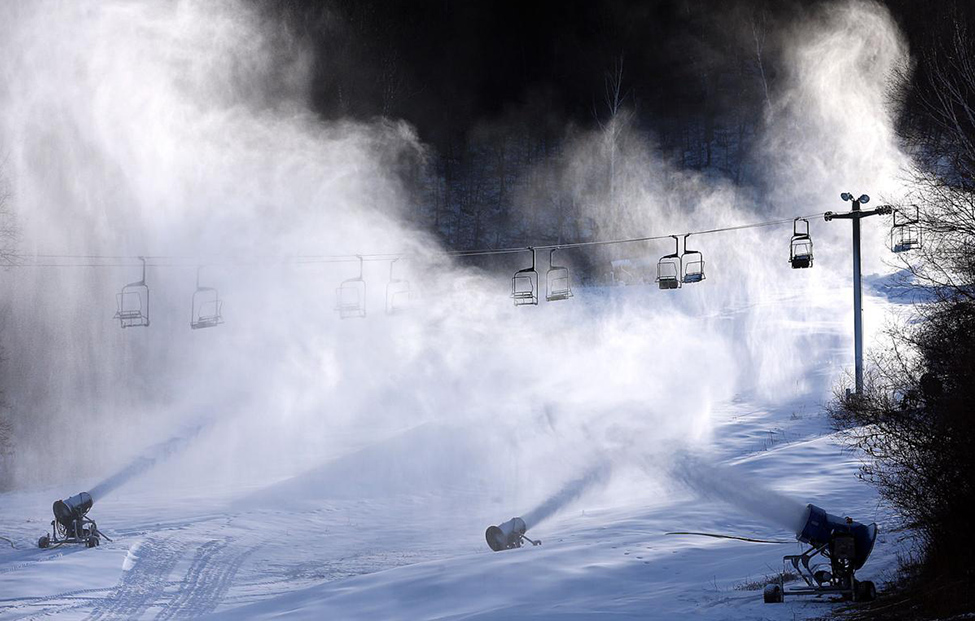Ski resorts often use snow machines to make snow and lay down a good base for the coming season.

Photo from the La Crosse Tribune Archives
To make snow for ski trails requires temperatures near or below freezing. The humidity also plays a role in snow-making; a lower humidity is better. A low temperature and a low humidity is the best atmospheric condition for snow-makers, as it yields the driest snow.
Wet bulb temperature is the lowest temperature to which air can be cooled by the evaporation of water into the air at a constant pressure. The wet bulb temperature is directly related to both relative humidity and outside air temperature. Web bulb temperatures of less than 20 degrees are ideal for snow-making with snow guns. Those temperatures can produce a dry snow.
Snow can also be made with wet bulb temperatures between 27 and 20 degrees, but the snow will be on the wet side. It is possible to make wet snow with temperatures slightly above freezing but that requires relative humidities less than about 40% (wet bulb temperatures are near 27 degrees).
Snow-making produces snow by mixing air and water. The nozzle of a snow gun produces tiny water droplets that freeze as they travel through the air. Compressed air or fans are used to loft the small droplets over the targeted section of the trail. The water droplets must freeze before hitting the ground, which would produce an ice glaze.
The machine-made snow is more like frozen water droplets than snow crystals. This machine-made snow has a greater density than natural snow but is good for laying a snow base for the season.
The wind also affects snow-making. The wind can help direct the flow of the snow and can help the hang time of a merging snowflake.
Steve Ackerman and Jonathan Martin, professors in the UW-Madison Department of Atmospheric and Oceanic Sciences, are guests on WHA radio (970 AM) at 11:45 a.m. the last Monday of each month and authors of Ask the Weather Guys in the Wisconsin State Journal.

